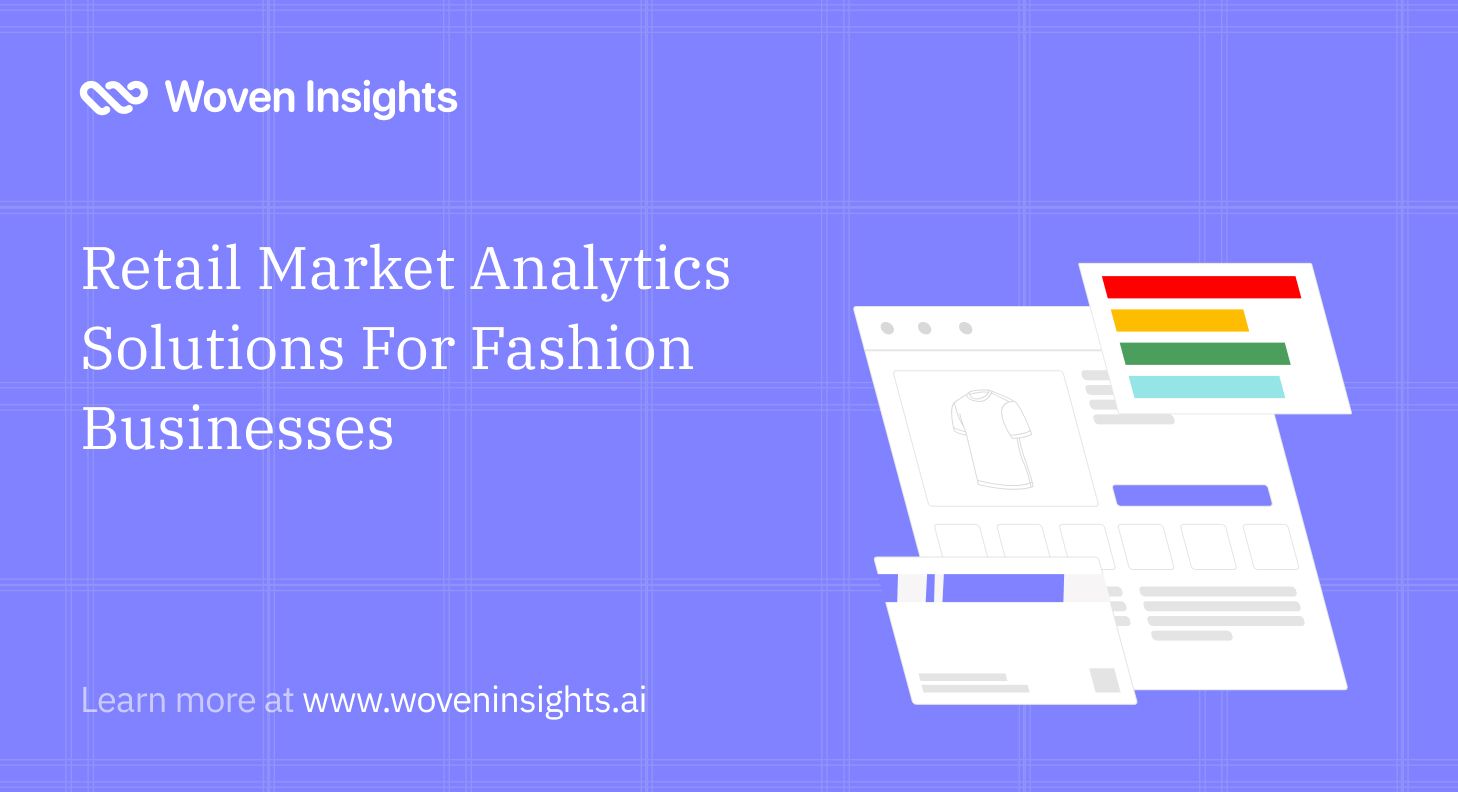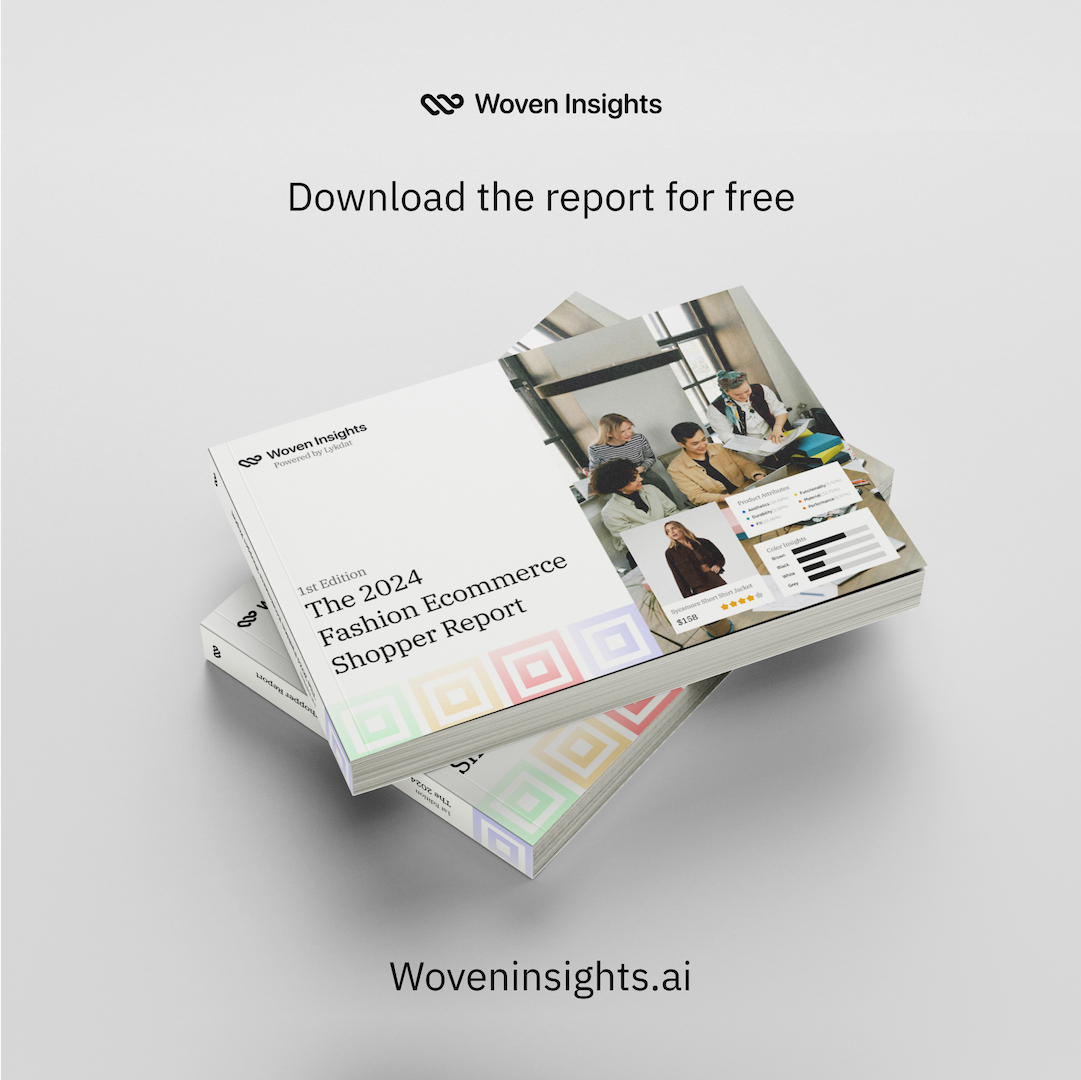Top Retail Market Analytics Solutions In Fashion
Walk through the essential features of fashion-specific analytics solutions in this article, and identify the top tools in the market.

The moderately-popular saying - "Data is King" - holds true now more than ever across all industries - including fashion.
For fashion manufacturers, brands, retailers, merchandisers, and research teams, understanding and dominating the fashion market requires a deep dive into the vast ocean of data that defines consumer behaviour and market dynamics. Leveraging retail market analytics is no longer a luxury but a necessity for managing resources efficiently and making informed, profitable business decisions.
This article explores the role of analytics tools in the fashion industry, shedding light on how data-driven strategies help tackle challenges ranging from design, manufacturing and inventory management to competitive benchmarking, pricing and consumer satisfaction.
Whether it's analyzing real-time sales data, optimizing supply chains, or personalizing marketing efforts, the right analytics tools can transform potential data into actionable strategies. This discussion will guide you through the essential features of fashion-specific analytics solutions and introduce top solutions in the market, ensuring your next business move is both stylish and data-driven.
What are Retail Analytics Solutions?
Retail data analytics tools empower retailers with the right information to help them make well-informed choices and maintain a competitive edge. These technologies enable a thorough analysis of consumer habits, sales trends, inventory levels, and other vital metrics.
With this data, fashion businesses can swiftly and accurately pinpoint emerging trends, decode customer preferences, enhance operational efficiencies, and create market-aligned products.
According to a report by McKinsey, companies that leverage customer analytics are 23% more likely to achieve above-average profits compared to their competitors. This underscores the tangible benefits of integrating advanced analytics into retail strategies.

The 2024 Fashion Ecommerce Report
Get free insights from 70m+ real shopper reviews and 20m+ unique fashion items.
Key Features For Fashion Retail Analytics Solutions
The most prominent features to look out for in fashion analytics solutions include:
- Trend Forecasting: Predicting upcoming trends to stay ahead in the market.
- Consumer Behavior Analysis: Understanding customer sentiment, purchasing patterns and preferences.
- Inventory Optimization: Balancing supply and demand to reduce excess stock and increase turnover.
- Pricing Analytics: Insights around business and competitor pricing to maximize profitability.
- Competitive Analysis: Monitoring competitors’ products, activities and market positioning.
- Sales Performance Tracking: Analyzing sales data to identify high-performing products and categories.
- Real-Time Reporting: Users should have instant access to up-to-date information about sales, inventory, and customer behavior.
- Customization and Personalization: Leveraging data to offer tailored products and experiences.
- Data Visualization: Transform vast complex data into easy-to-understand visual representations, such as charts and graphs.
- Scalability: Ensuring that the analytics solution can handle growing data volumes and increasing complexity as the business needs evolve.
Top Retail Analytics Software Solutions
These are some of the most prominent retail analytics solutions for fashion businesses:
1. Edited
EDITED specializes in providing retail intelligence services.They collect and categorize vast amounts of data across various retail sectors, such as apparel, footwear, and home goods, providing tools for competitive analysis, pricing strategies, inventory optimization, and more.
Their services include several products like EDITED Market, EDITED Digital, and EDITED Omni, which cater to different aspects of retail management and marketing.
2. Woven insights
Woven Insights is a fashion business intelligence solution designed to transform vast amounts of data into actionable insights, tailored to empower decision-makers in the fashion industry.
Woven Insights
By combining Artificial Intelligence technology with user-friendly interfaces, Woven Insights offers two main modules — Market Insights and Consumer Insights —that cater to diverse needs but share core functionalities.
Woven Insights boasts of the most affordable retail market and consumer insights solution for fashion businesses.
3. Stylumia
Stylumia provides data-driven insights for fashion and lifestyle retail. Their AI-powered insights help bridge the gap between supply and demand, ensuring that products align closely with consumer preferences.
Key features of Stylumia include its consumer intelligence tool, which analyzes vast amounts of data to guide forecasting and assortment planning, and its ImaGenie tool, which is described as a highly accurate predictive design tool that helps create winning fashion designs by analyzing trends across various digital platforms.
4. Heuritech
Heuritech is a fashion technology company that specializes in predictive analytics for the fashion and sportswear industries. It leverages artificial intelligence and machine learning techniques to analyze millions of images shared on social media daily. This analysis helps fashion brands forecast trends, understand consumer preferences, and make informed decisions about product assortments, ultimately aiming to reduce overstock and enhance sustainability.
5. WSGN
WGSN is a leading authority in trend forecasting, providing insights that help brands across various industries - from fashion to consumer tech - design products that align with future consumer demands. Their services include detailed forecasts on consumer behavior, product design, and market trends, utilizing a blend of quantitative and qualitative data.
Conclusion
As fashion continues to evolve, brands face the constant challenge of adapting to rapid changes in consumer preferences and market trends. Integrating retail market analytics solutions provides these brands with an advantage. These tools offer powerful insights into consumer behavior, sales patterns, and inventory management, allowing companies to anticipate market demands, optimize their operations, and personalize customer interactions.
By embracing these solutions, fashion businesses of all sizes can enhance their decision-making processes, ensuring more agile and effective responses to emerging market trends. This strategic integration not only leads to improved operational efficiencies but also boosts customer satisfaction and loyalty, ultimately driving greater profitability and market success.
About Woven Insights
Woven Insights is a comprehensive market analytics solution that provides fashion brands with real-time access to retail market and consumer insights, sourced from over 70 million real shoppers and 20 million analyzed fashion products. Our platform helps brands track market trends, assess competitor performance, and refine product strategies with precision.
Woven Insights provides you with all the actionable data you need to create fashion products that are truly market-ready and consumer-aligned.
Click on the Book a demo button below to get started today.

